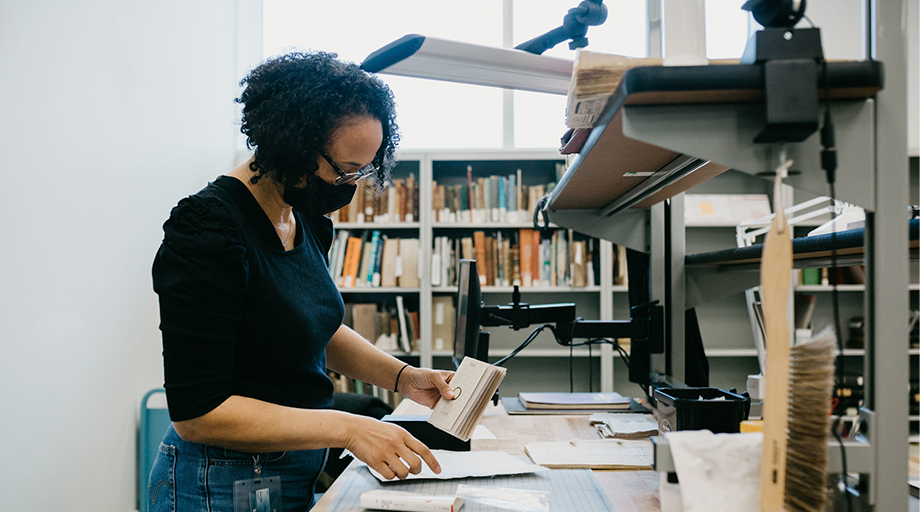This post was originally published by the University of British Columbia Library.

The Irving K. Barber Learning Centre (IKBLC) is now home to UBC Library’s newest specialized space dedicated to the conservation, preservation and treatment of the library’s physical materials. Completed in early September 2021, the Conservation Space is staffed by conservator Anne Lama, conservation technician Hannah McKendry, and student staff who ensure that the library’s circulating collections and rare materials will stand the test of time.
Rudi Traichel, who oversees the library’s preservation services as a technical services librarian, says that the Conservation Space has been a long-held dream for his team and its realization an important milestone for the library.
“While the actual construction started in late 2021, that was after a number of years, and a lot of discussions and planning,” says Traichel, noting that a key factor in moving forward with the project was finalizing a location, which was chosen with care to position the Space in close proximity to Rare Books and Special Collections (RBSC) and University Archives.
While the project required a long journey of reflection and a year of preparation, Lama is excited by the result, which has been transformative for the work she and McKendry are able to carry out.
“The Conservation Space is an open window to communicate to the community the variety of expertise available at UBC Library and how we are working hard to facilitate access to the library’s collections,” says Lama.
UBC’s Preservation Unit was originally established in January 2011 and integrated into the Technical Services Department in June 2012. While the team worked in an open space within Technical Services in the Woodward Library building, and in a small office at Rare Books and Special Collections (RBSC), they were often limited by the close quarters.
“With preservation, the work is slow and methodical, and there’s often a lot of time where a book needs to sit and dry for several hours after treatment. Now I can let my work dry on another surface and start a new project on my workbench,” says McKendry. “Our materials were stored in several different areas across two branches. Having all our supplies and materials in one spot is so convenient, and definitely more efficient.”
Read the full story on the UBC Library website.